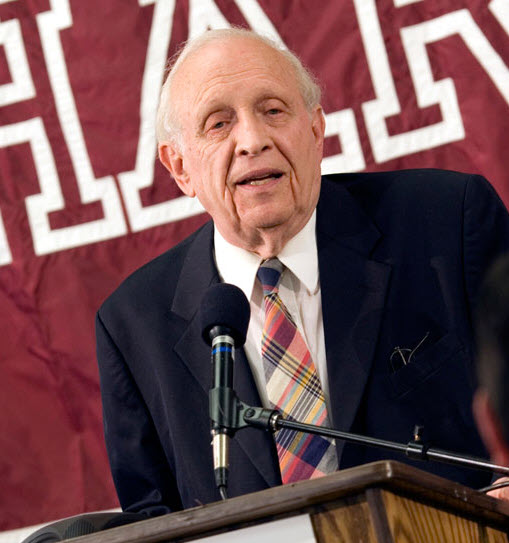
Speaker:
Nobel Laureate Dr. Roy Glauber (Harvard University)
Location:
Address:
Mitchell Institute for Fundamental Physics & Astronomy
College Station, Texas 77843
ABSTRACT: Roy Glauber was just 18 years old when he was selected to leave his studies at Harvard to join the work of the Los Alamos Laboratory on the Manhattan Project. He journeyed from Santa Fe Station in Lamy, New Mexico to Los Alamos in a car with John von Neumann. Glauber worked in the theoretical division under Hans Bethe, and talks about Edward Teller, Richard Feynman, Stanislaus Ulam, and other luminaries. Glauber went on to become a leader in physics, winning the Nobel Prize in Physics in 2005 for his work on quantum optics. He also discusses his early interest in astronomy and physics, cultivated by clubs and teachers.
BIOGRAPHY: Roy Jay Glauber is a theoretical physicist born in New York City on September 1, 1925. A member of the 1941 graduating class of the Bronx High School of Science, Glauber went on to do his undergraduate work at Harvard University. Following his sophomore year he was recruited to work on the Manhattan Project, where he was one of the youngest scientists at Los Alamos.
His work involved calculating the critical mass for the atom bomb. After two years at Los Alamos, he returned to Harvard, receiving his bachelor’s degree in 1946 and his Ph.D. in 1949. From 1949-51, Roy Glauber was a member of the Institute for Advanced Study in Princeton, NJ, first on an Atomic Energy Commission postdoctoral fellowship, and then on a Jewett Fellowship.
Glauber has received many honors for his research, including the Max Born Award from the Optical Society of America, the Dannie Heineman Prize from the American Physical Society, the W.E. Lamb Prize, and one half of the 2005 Nobel Prize in Physics “for his contribution to the quantum theory of optical coherence,” with the other half shared by John L. Hall and Theodor W. Hänsch.
In his work, published in 1963, he created a model for photodetection and explained the fundamental characteristics of different types of light, such as laser light and light from light bulb. His theories are widely used in the field of quantum optics. Glauber’s recent research has dealt with problems in a number of areas of quantum optics, a field which, broadly speaking, studies the quantum electrodynamical interactions of light and matter. He is also continuing work on several topics in high-energy collision theory, including the analysis of hadron collisions, and the statistical correlation of particles in high-energy reactions.
He is currently the Mallinkrodt Professor of Physics, emeritus, at Harvard University.
Reception to be held at 3:30 p.m. in the Mitchell Institute’s Penrose Plaza
Copyright © 2024. All rights reserved, Texas A&M University Trademark | Texas A&M University, College Station, Texas 77843